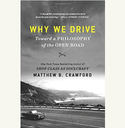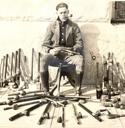Of all the reproductive technologies Liza Mundy considers in her dizzying chronicle of their history and implications, cloning is one she is fairly certain will not catch on. Why? Because "what most people want to do is procreate together. People want to have a baby, if they can, with the person they love" (p. 336). And a baby is "human love made concrete, human love given flesh, human love that takes form and is now moving about and growing, the living, breathing testament of our union with another person" (p. 117).
In Mundy's account, the defining human desire to see love take flesh in a new child seems to leave no one untouched by its urgency. As the author shows through diverse interviews and anecdotes, the quest for a baby drives not only married couples struggling with infertility but also new categories of people who won't or can't conceive without technological intervention: "single mothers by choice," post-menopausal women, same-sex pairs. In unrelenting pursuit of a child in the face of high cost, physical pain, and inconvenience, these seekers are absorbed into a vast experiment in casting off the constraints of nature, abetted by what in America, at least, is a scantily regulated $3 billion fertility industry.
Although Mundy evinces no principled objection to baby-making transposed into a technocratic key, she casts a perceptive eye on the emergence of techniques from artificial insemination to intracytoplasmic sperm injection (ICSI) - and on the social consequences, unanticipated and unrestrainable, of what might originally have been regarded as private personal choices. Where nature is rendered obsolete, cultural forms quickly follow suit, as we see in the book's opening vignette: the efforts of an Episcopalian priest to write the egg donor into the baptismal liturgy of triplets conceived by in vitro fertilization.
Another of the countless dilemmas Mundy details is the simple question of what to call the participants in the generation of a child. There can be gestational carriers (formerly known as "surrogate mothers"), egg donors, sperm donors, the legal parents (who could be any of the above or none of the above)... and then of course we need to account for the gestational carrier's husband, for whom Mundy, in despairing irony, crafts the moniker "non-biological birth father" (p. 149). What seems a comically complicated parody of the traditional "Mom" and "Pop" reflects an unprecedented web of serious relationships that, once invented, must be navigated moment by moment without benefit of a cultural script.
Even when assisted reproduction remains within the traditional domain of a marriage, Mundy's stories show that choices and consequences are legion, complicated, and alienating. There is the couple undergoing in vitro fertilization using their own gametes, who discover that the wife's oocytes seem to be defective. The wife is ready to pursue adoption; the husband would prefer IVF using his own sperm and a donated egg so that some genetic link is maintained. Left out, the would-be mother hesitates: "If it's not going to be mine, couldn't it not be both of ours?" (p. 56).
And then there is the couple who, having conceived triplets, chose "selective reduction," that is, the abortion of one of the children while the others were permitted to develop to term. The mother, now busily raising the remaining twins, told Mundy, "People will say to me, ‘Could you imagine triplets, how hard that would be,' and I can't help but think: I did have triplets. It was a decision between me and my husband. We talk about it, how hard it is. He talks a lot about how sad he feels about it, and he's surprised how sad he feels about it. And he does feel sad" (p. 269).
Parents who conceive through artificial reproductive technologies are surprised in more ways than one, and the grief they encounter is not just their own. The desire to bring forth new life is matched by the desire to know one's origins. This is something that we have learned, as Mundy shows, from the practice of adoption, transformed in recent decades from a "closed" transaction that protects the identity of the adults to an often more "open" process that affords the child the greatest possible opportunity to know not only the parents who raise him but also those who engendered him.
But the lesson evidently has to be learned all over again in the face of new technologies: Mundy reports that while only 47% of parents who conceive children with donor gametes expect that their children will be interested in a relationship with the donor, 82% of children so conceived actually are. The statistic presupposes, of course, that the children responding have discovered or been told the nature of their conception; this does not simply go without saying, although many of the parents Mundy interviews are open with the children about using ARTs.
Self-deception surfaces in Mundy's account, in any case, as her subjects find ways to justify their acceptance of the shadowy side of the technologies. There is the doctor, a pioneer in fetal therapy in vivo, who also performs selective reductions on the premise that this can't be abortion because the woman remains pregnant (with the remaining twins or a singleton) after the procedure. "I've come to look at it as: the finished product has a much better chance of surviving. Look - you never want to dehumanize it, because then you get cavalier. You have to keep the big picture in mind. We're not losing one. We're saving some" (p. 266).
In a similar vein, a mother recounts her changed attitude toward her frozen embryos: "Little lives: that's how I thought about them, but you have to switch gears and think, they're not lives, they're cells. They're science. That's kind of what I had to switch to" (p. 293). Others, who can't reconceive their "leftover" embryos as "science," are continuously tortured by the question of what to do with them.
The achievement of Everything Conceivable is Mundy's ability to weave diverse strands of biology, politics, economics, history, and personal stories into a comprehensive, insightful picture of the brave new world of procreation remade through technology. She sports a breezy journalistic style, but approaches her subjects with genuine pathos and a willingness to see and criticize many of the untoward dimensions of ARTs even as she admires the beautiful children so conceived and their dedicated parents. Her account of the relationship between the fertility industry, feminism, and the homosexual movement over several decades is a fascinating synthesis, and her feminist sympathies do not prevent a discussion of the uneasy transformation of pro-choice rhetoric in light of increasing public awareness of the facts of fetal development - and in light of the resurgent desire of women to have children as well as to prevent them.
Mundy does resent the American pro-life movement's effective resistance of federal funding for human embryo research to make ARTs safer and more effective for children as well as parents. "IVF itself was the experiment" she laments (p. 32), refusing to acknowledge that ARTs ineluctably involve experimentation with human subjects, whether this takes place in concerted fashion through planned experiments or ad hoc in the course of meeting would-be parents' expectations.
Mundy's agnosticism about the dignity of nascent life colors her overly vague account of the product of ICSI, in which a sperm cell is injected into an oocyte. She recounts her fascination at the arbitrary power of this procedure, which usurps the prerogatives of "God..., or natural selection, or whoever chooses which gametes become humans" (p. 85). Two-hundred fifty pages later Mundy reports that young cell biologists are often horrified by the violence of ICSI. - it's "like stabbing a body with a bayonet," one says - but she minimizes this reaction as the "outsized reverence for the natural processes they spend their lives studying" (p. 337).
While Mundy herself can't be accused of "outsized reverence," she, like many of her subjects, has to resist her own spontaneous response to what she witnesses on occasion, suppressing her discomfort with a reminder "not to fetishize nature" (p. 86). Ironically, her profound recognition that a child is desirable as an embodiment of love crystallizes not in the context of normal conjugal relations but with reference to a lesbian pair's selection of a sperm donor with physical traits to match the non-biological mother. We are confronted by a paradox: the child conceived in this way embodies a love that in fact circumvents the flesh as far as possible. This child is not so much a gift to two spouses, the always-surprising fruit of their love's spontaneity, as the meticulous construct of the wills of four protagonists - the lesbian pair, the sperm donor, the IVF doctor - with the aid of props and a supporting cast.
It is a delicate business to offer criticisms of technologized fertility, for there is no dearth of generosity, sacrifice, gratitude, and wonder in the mothers and fathers Mundy depicts in their pursuit of one of the great goods of human life. And inasmuch as reproductive technologies cannot but piggyback on the structures of creation itself, the children conceived through ARTs cannot but be gifts to their families and to themselves. The question is whether the mode of their conception, abstracted as it is from embodied communion, does justice to them and to their parents' love, or whether it does not instead tend to displace the Giver of love and life, to the detriment of both. Lacking a transcendent horizon, Everything Conceivable - for all its insight and valuable perspective - cannot entertain this decisive question.



